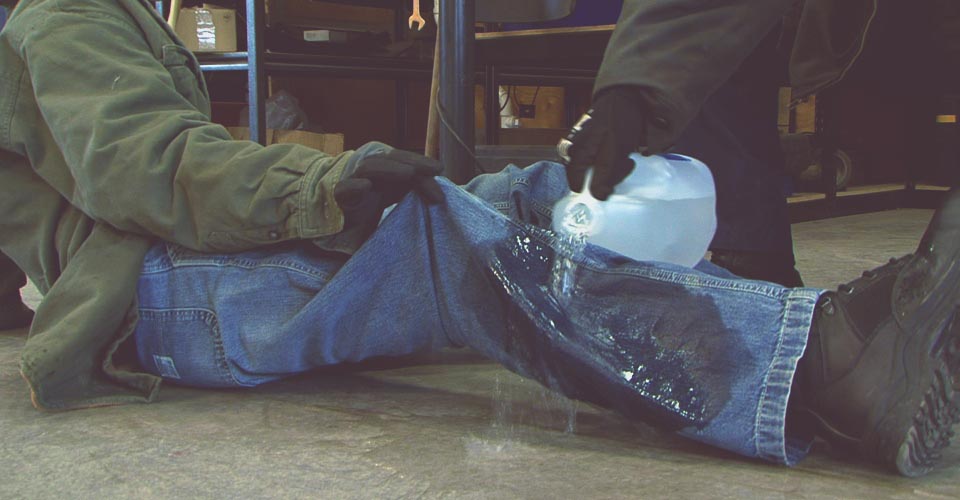Burns are a typical workplace injury, and there are different types of burns that can occur. Today’s post takes a look at the emergency care required for two common types of burn injuries in a workplace setting: chemical burns and electrical burns.
Early treatment of burns can help minimize the damage that can occur and prevent later complications. The larger the surface area burned, the greater the disruption of the skin’s ability to properly maintain body temperature. The deeper a burn goes into the skin and underlying tissue, the more likely the risk of infection. Burns involving the face, hands, genitals, and feet can result in the limitation of basic functions, such as movement and sensation.
Chemical burns
Some chemicals can react and damage skin tissue on contact. The immediate care is to dilute and remove the chemical quickly to minimize the damage.
Brush off any dry powder with a gloved hand or cloth. Remove any contaminated clothing.
Flood the affected area with large amounts of water, unless the chemical is known to react with water. Continue to flush with water until the burning sensation stops.
Cover any visible burns loosely with a dry, clean pad and seek further medical attention.
Electrical Burns
Electrical burns are caused by contact with electrical wires, current, or lightning.
Be safe! Turn the power off before touching the affected person. If you cannot make it safe, do not attempt care.
An electric shock can cause an abnormal heart rhythm in which the heart stops. If this occurs, activate EMS and have someone get an AED if one is available. Perform CPR until an AED is ready, another provider or EMS personnel takes over, or you are too tired to continue.
If the person is responsive, thermal burns may be present at the places the current entered and exited the body.
Internal injury from an electric shock is often more severe than might be suspected. Always seek professional medical care since the extent of injury may not be apparent.
Improving Chemical and Electrical Safety at Work
Summit Training Source offers a number of courses designed to mitigate the hazards of work with or near chemicals and electricity. Our chemical safety portfolio includes topics such as:
For those working closely with electricity, check out our courses on:
- Electrical Safety
- Energized Electrical Work Permit
- NFPA 70E: Arc Flash and Arc Blast Protection
- Static Electricity
Visit our online catalog to learn more.







.png?width=600&name=HSI-CTA-EmergencyCareTraining%20(1).png)











Comments